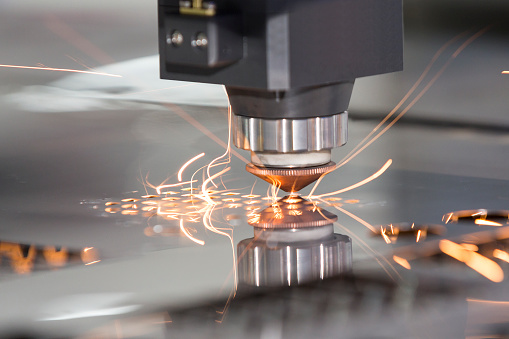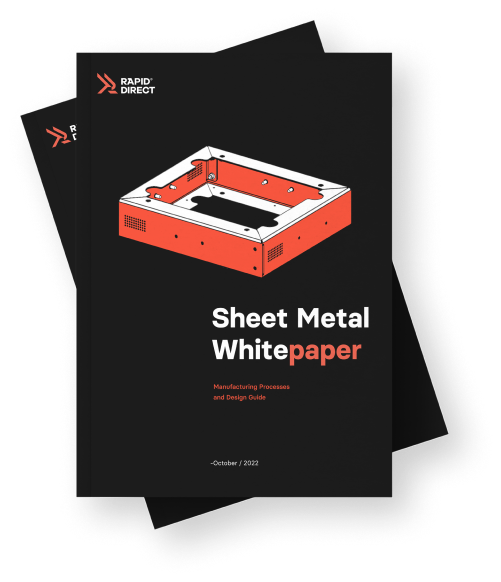Perhaps you’ve seen sheet metals on several occasions used for roofing, welding, auto manufacturing, food industry, or in special sheet metal fabrication, and you’re wondering how the thickness of these smooth, beautiful pieces are determined. A system called the gauge system determines this thickness.
This article explains the meaning and importance of sheet metal gauge for sheet metal fabrication. It also explains how to measure gauge and how to choose the right metal thickness for your fabrication.
What is Gauge in Sheet Metal Fabrication?
When we talk of gauge in sheet metal manufacturing, we refer to the standard sheet metal thickness for a specific material. Therefore, if you want to know how thick is sheet metal material, its gauge is what you should look for.
The higher the gauge number, the lesser the thickness of the material. Hence, metals with a large gauge number will be thin and vice versa. In many parts of the world, machinists measure sheet metal gauges in millimeters. However, ferrous metals have a different gauge from nonferrous metals. For instance, copper is a nonferrous metal, and ounces per square foot is its unit for measurement.
Choosing a metal with the right gauge is essential to a successful design. It is what determines whether an object will last or fail after short use. If the sheet metal gauge is incorrect, there may be minor or catastrophic effects on your design.
How to Measure Sheet Metal Thickness
Now that you already know what a sheet metal gauge is, you should learn how to measure sheet metal thickness. You can measure the sheet metals using regular tape or a gauge wheel. With a sheet metal gauge chart (is shown in next part), you can convert the gauge size to mm or inch.
Solution 1: Measuring Sheet Metal Thickness With Tape
There are three simple steps required in this, and they include:
Step 1
Use the millimeter hash marks on your tape to find the thickness of sheet metal. Remember that there are two different measurements on your tape, namely the cm and mm. Using the former will not provide the accurate measurements you crave.
Step 2
You can convert the number obtained in mm to inches. Multiply the number in mm by 0.03937. For instance, if you got a 60mm measurement, multiply with the said number, and you’ll have 2.3622 inches.
Step 3
Compare your result in inches with a sheet metal gauge chart. That way, you’ll find the appropriate gauge of your metal.
Solution 2: Measuring Sheet Metal Thickness With Wheel
A gauge wheel is a simple tool with no moving part. You can use it to measure both wire and sheet. There are three simple steps involved in this process, including:
To save you some time, here is a video on how to use a gauge:
From the video, you could learn that there are basically 3 steps to measure a sheet metal:
Step 1
If you measure a nonferrous metal (metals without iron) like copper, gold, or silver, you should check the front of the gauge wheel and confirm it reads “nonferrous metal.” On the other hand, if you wish to determine the sheet metal gauge of ferrous metals (iron-containing metals) like cast iron, stainless steel, etc., ensure to choose a gauge wheel that reads “ferrous metal.” Use the right gauge wheel to get the correct measurement.
Step 2
There are gaps of different sizes around the gauge wheel. Each gap has a number written in front, and the principle is to place your piece in each gap until you find a place where it perfectly fits. There’s a round cut out below the gaps; those are not the right ones to use. Instead, use the gaps at the top.
Step 3
Once you find the right gap where your metal perfectly fits in, you should check the number in front. For example, if your metal fits in a gap with 16 written in the front, that shows you have a 16 gauge metal.
Standard Sheet Metal Gauge Chart
The gauge number “16” holds little relevance in the actual measurement of a metal gauge. It still needs to be converted to millimeters or inches. This is the right way to determine the thickness of sheet metals. For a stress-free conversion, you may refer to a gauge conversion chart.
For example, according to a gauge conversion chart, 16 gauge galvanized steel is 0.0635 inches or 1.6129mm.

Why is Choosing Gauge Important for Sheet Metal Fabrication?
It is risky to purchase any available metal without considering its thickness, or gauge. Thus, the following are why choosing gauge is vital for sheet metal fabrication:
- Durability: Whether your design will last or not is mainly dependent on the gauge of the metal used. Some objects require thick metals with exceptional strength, while some don’t. Hence, the durability of such a design depends on the gauge of the metal.
- Economic: Not all designs require thick metals. Hence, too dense or too much metal can add to your production and shipping cost, which is not economical.
- Structural problem and deformation: Using too thin metal for specific designs might result in structural issues or deformation of the item.
How to Decide Gauge for Sheet Metal Fabrication
One of the technical things a fabricator should know is the right sheet metal gauge to use. Many fabricators often fail in this regard, and the end-user of such a design usually pays dearly for such a mistake. Therefore, it is crucial to use the correct thickness of sheet metal to optimize efficiency and functionality. Below are how to decide gauge for sheet metal fabrication:
Scenario
If you have a construction project that requires high rigidity, you’ll have to opt for a lower gauge sheet material. Remember, as discussed earlier, the lower the gauge, the thicker the object. On the other hand, if your construction requires different curves and high flexibility, you should go for a higher gauge material.
You may also want to consider lower gauge materials if your design will be exposed to harsh weather, high temperature, and pressure. If it will be kept indoors or safe from those factors mentioned, high gauge materials are a good choice too.
Efficiency
The workflow of a project from beginning to end can be affected by the sheet metal thickness used. A design made of sheet metal materials with the right thickness will be more effective in performing the designated task. On the other hand, a design made with the wrong thickness of sheet metal material will be less effective in performing the job for which it was intended. Therefore, considering efficiency and suitability will help you choose the right sheet metal gauge for fabrication.
Cost
Cost is another factor that can help you choose a suitable gauge for sheet metal fabrication. Sheet metals made of thick materials are usually more expensive than their light materials counterpart. However, while also considering cost, you should first consider the purpose the metal is meant to serve. This will guide you to choose a suitable gauge for your specific application.
Need Sheet Metal Fabrication? RapidDirect is Here for You
If you desire to patronize a firm offering cost-effective and on-demand metal fabrication, you shouldn’t hesitate to contact RapidDirect. We’ve been doing this for nearly two decades, and it is why many of our customers often refer our service to others who need such. We genuinely care about your need, which is why we will also provide the appropriate technical suggestions for your projects.

Delay is not one of our attributes. We offer quotes in less than 12 hours; hence, you can rely on us not to waste your time. One fantastic thing about our quotation is that you necessarily don’t have to be at our office to get it. All you need is to upload your CAD files on our website and specify requirements. Also, your quotation will be accompanied by free professional DfM analysis on your request.
At RapidDirect, we offer excellent manufacturing processes, including cutting, punching, bending, welding, etc. With us, you’ll get top-notch engineering support. Asides from all this, our service is also affordable. If you patronize us, you’ll get a 30% lower price on average. With RapidDirect, not only will you get exceptional metalwork, but you’ll also enjoy the best price rates.
FAQs
They are used in automotive industries for building bodies of cars, for making airplanes, and for building construction, etc.
Human judgment is prone to error, and a minor error can be catastrophic for your construction. Using a sheet metal gauge is more comfortable and accurate; therefore, it is a better choice.
No, you can’t. Ferrous metals have different thicknesses and different gauge wheels. You’ll get inaccurate results if you use a single gauge wheel for both measurements.
Conclusion
You don’t just choose any metal you find for your construction without examining whether its thickness is suitable for the purpose or not. Thus, a sheet metal gauge is a simple way to confirm this. It is a simple technique adopted by professionals to choose suitable metal thicknesses for their construction. Using the appropriate metal gauge can save you cost and enhance efficiency.



